
Take-Aways:
We have been making a case for the past week and a half that there is scope for the S&P 500 to stage a rally toward the 3,900 level. Supporting this view is the fact that most of the key themes that we track to monitor risk appetite in the market have not been making new lows with the index. Until these ratios reverse their bearish trends, we continue to view rallies in the S&P 500 as countertrend in nature.
Key Themes and Relationships
Semiconductors vs. S&P 500
Semiconductors have broken support relative to the S&P 500 and remain below the declining 50 and 200-day moving averages. The 14-day RSI is still in a bearish regime despite not becoming oversold this week. This breakdown in the face of a large equity rally yesterday is not a development that the bulls want to see.
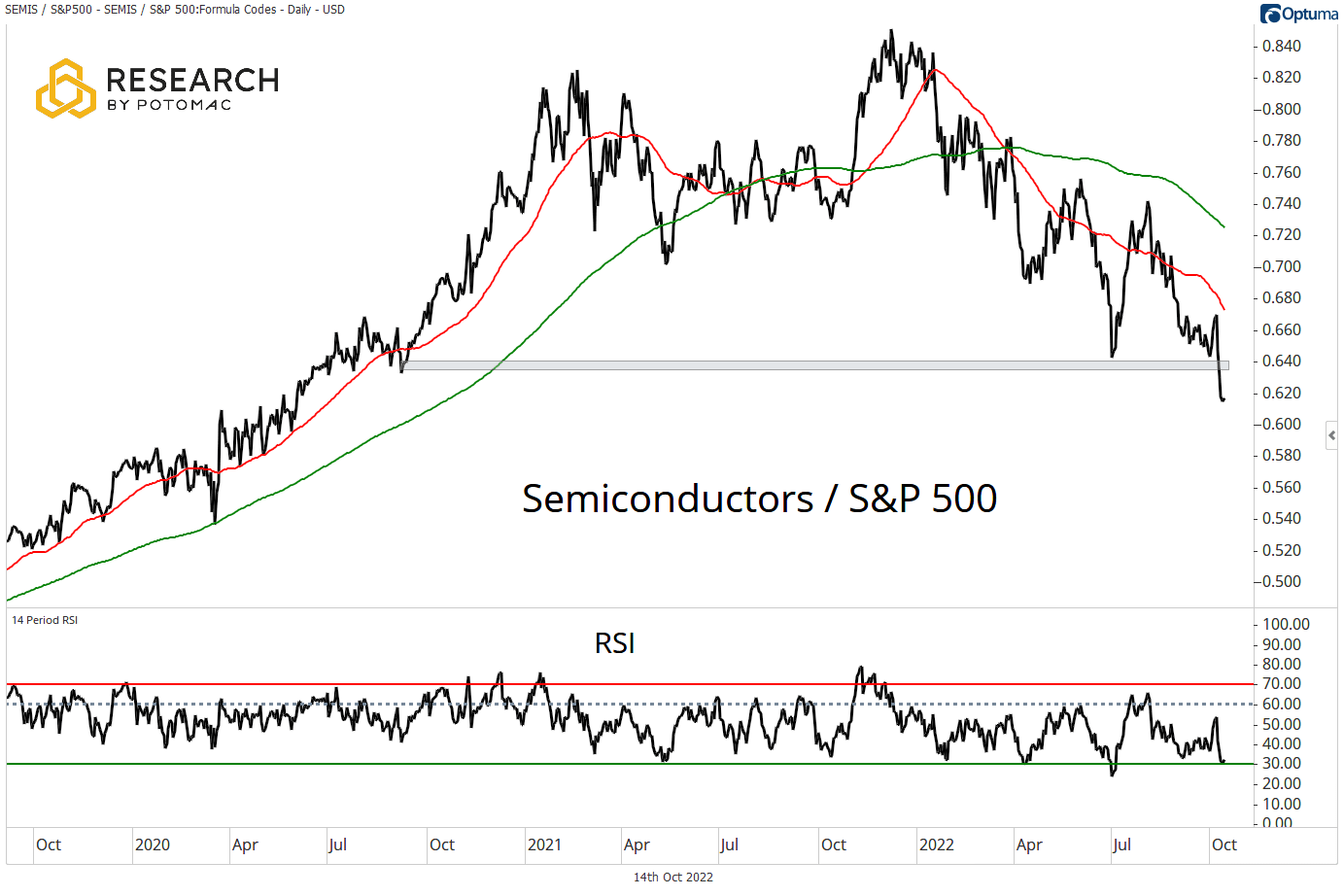
High Beta vs. Low Volatility
The High Beta/Low Volatility ratio remains stuck between support and resistance as it trades below the declining 50 and 200-day moving averages. It is interesting to note that this ratio has not made new lows with the S&P 500 this week. However, we need to see the 200-day moving average broken to the upside to have confidence that risk appetite is returning to the market.
The 14-day RSI remains in a bearish regime.
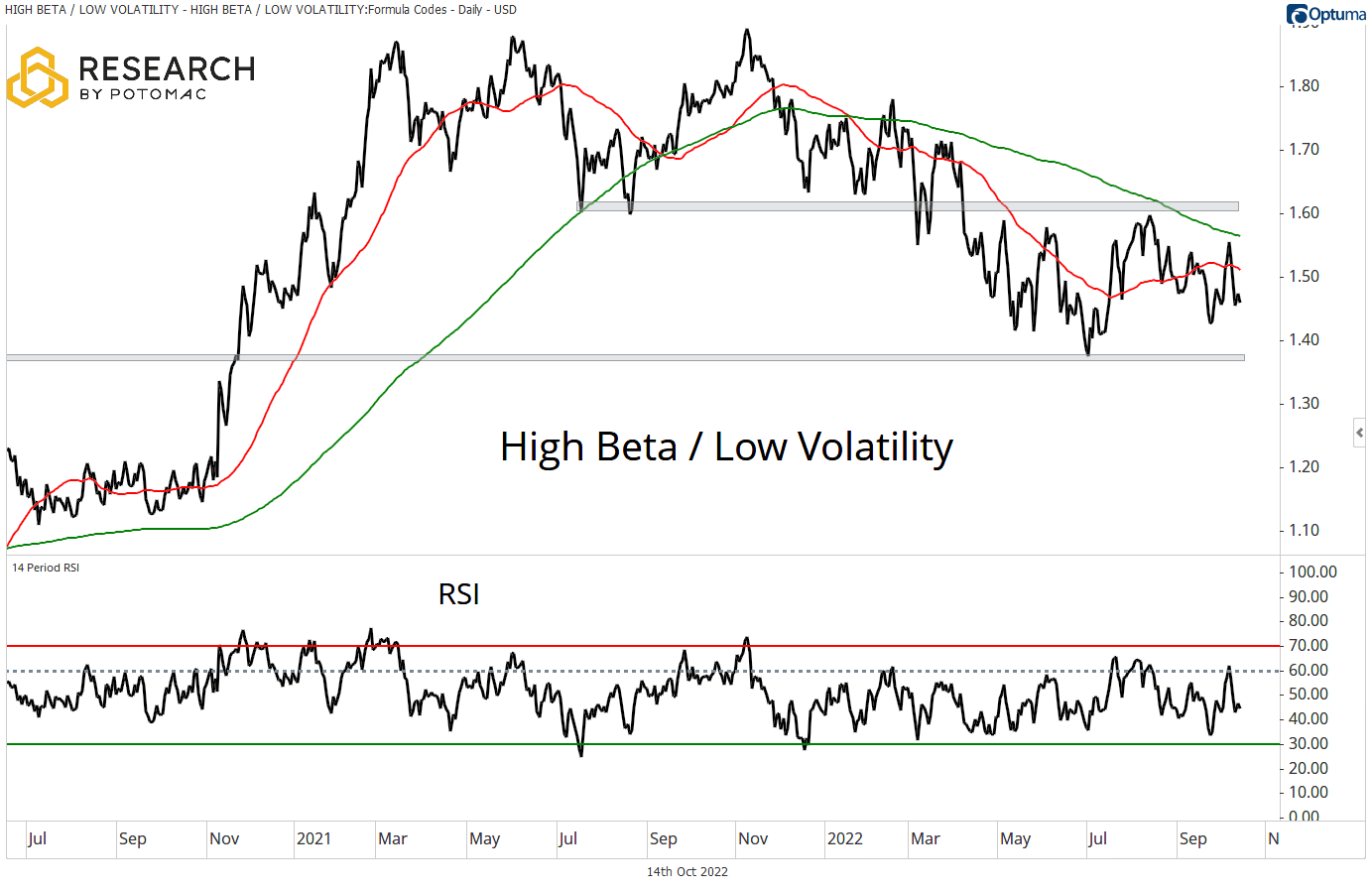
Consumer Discretionary vs Consumer Staples (Equal Weight)
The Discretionary/Staples ratio has moved back below the 50-day moving average while holding below the 200-day moving average. There is price-based resistance at the pre-COVID levels that must be overcome before we can claim that the trend has turned in favor of risk-on.
The 14-day RSI is holding in a bearish regime but has not become oversold since June. This is a sign that downside momentum may be waning as a base forming in price.
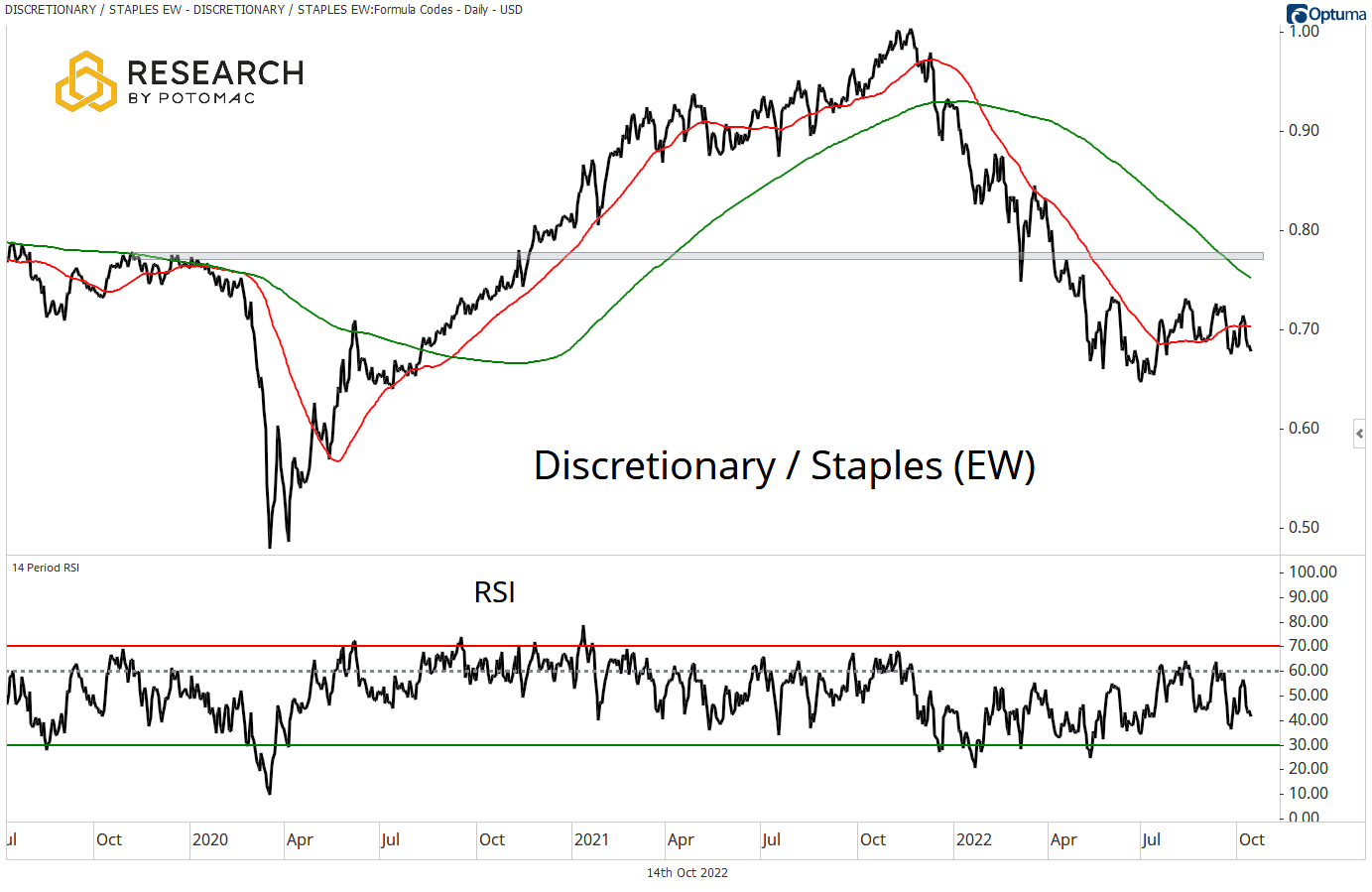
Growth vs Value (Large Cap)
The Growth/Value ratio remains below the 50 and 200-day moving averages and is in the process of breaking price-based support. The door is now opened to testing the May low. Growth bulls need to see a move above the moving averages to have more confidence in sustained leadership.
The 14-day RSI is in a bearish regime near oversold levels.
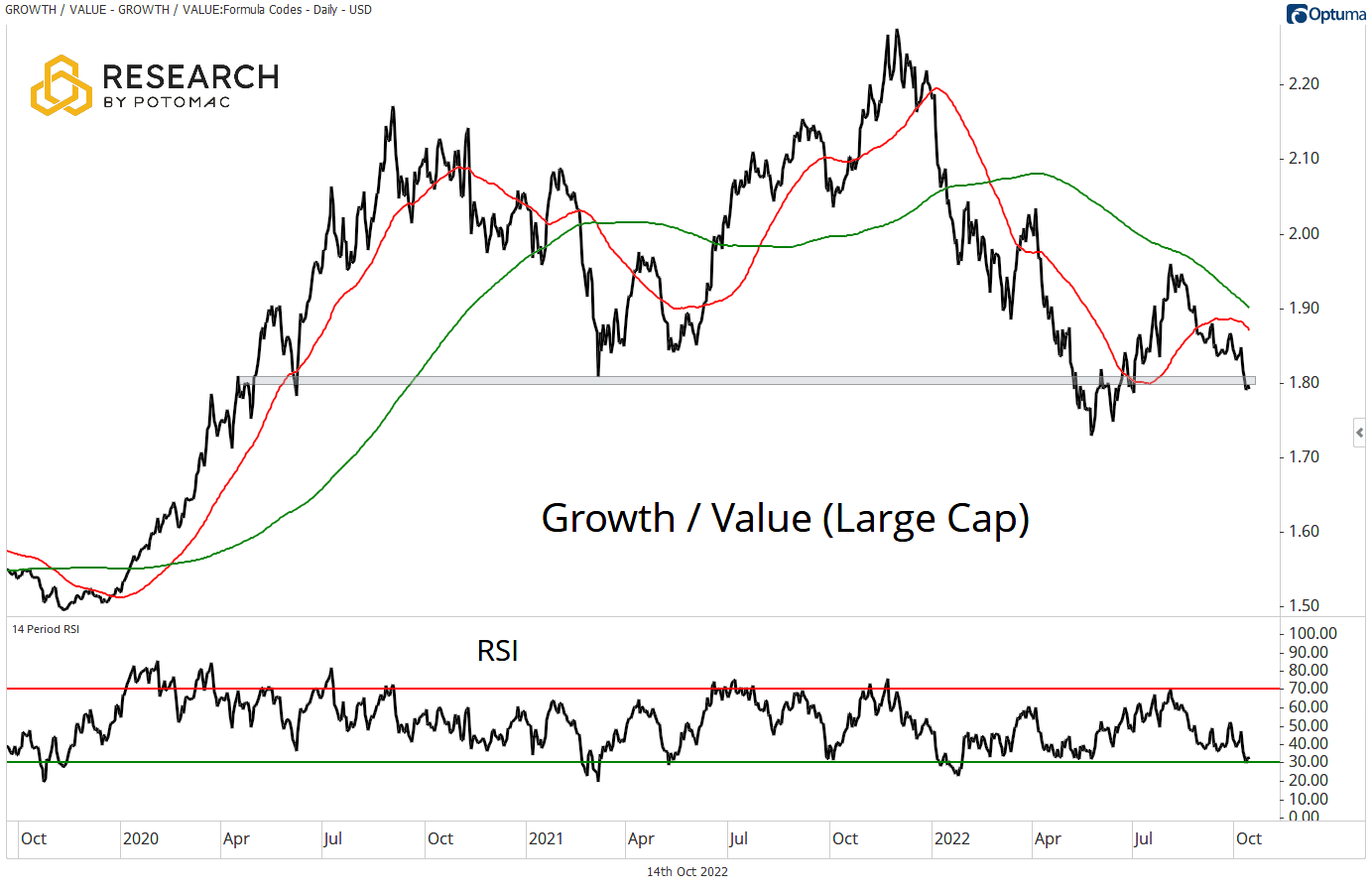
Small Caps vs Large Caps
The Small Cap/Large Cap ratio remains between price-based support and resistance as it trades around the 50 and 200-day moving averages. A move above resistance would be a signal that Small Caps are taking a leadership position in the market.
The 14-day RSI has broken a short-term downtrend to move toward an overbought level after failing to become oversold. A shift in momentum to a bullish regime could be a sign that Small Caps are going to begin to outperform.
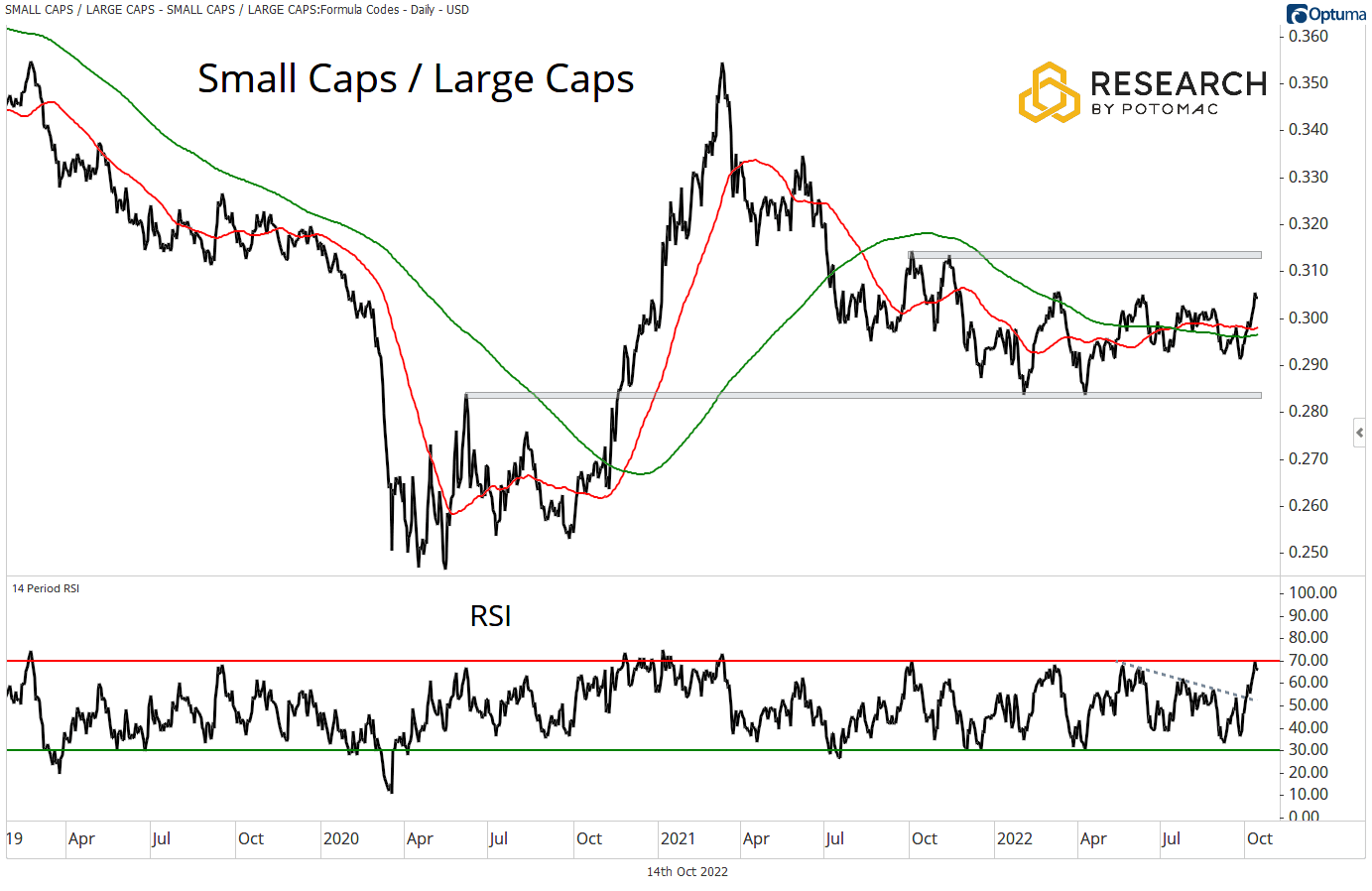
High Yield vs Treasuries
The High Yield to Treasuries ratio continues to trade between support and resistance below the 50 and 200-day moving averages. The trend here remains neutral, confirmed by the 14-day RSI trading in the middle of the range.
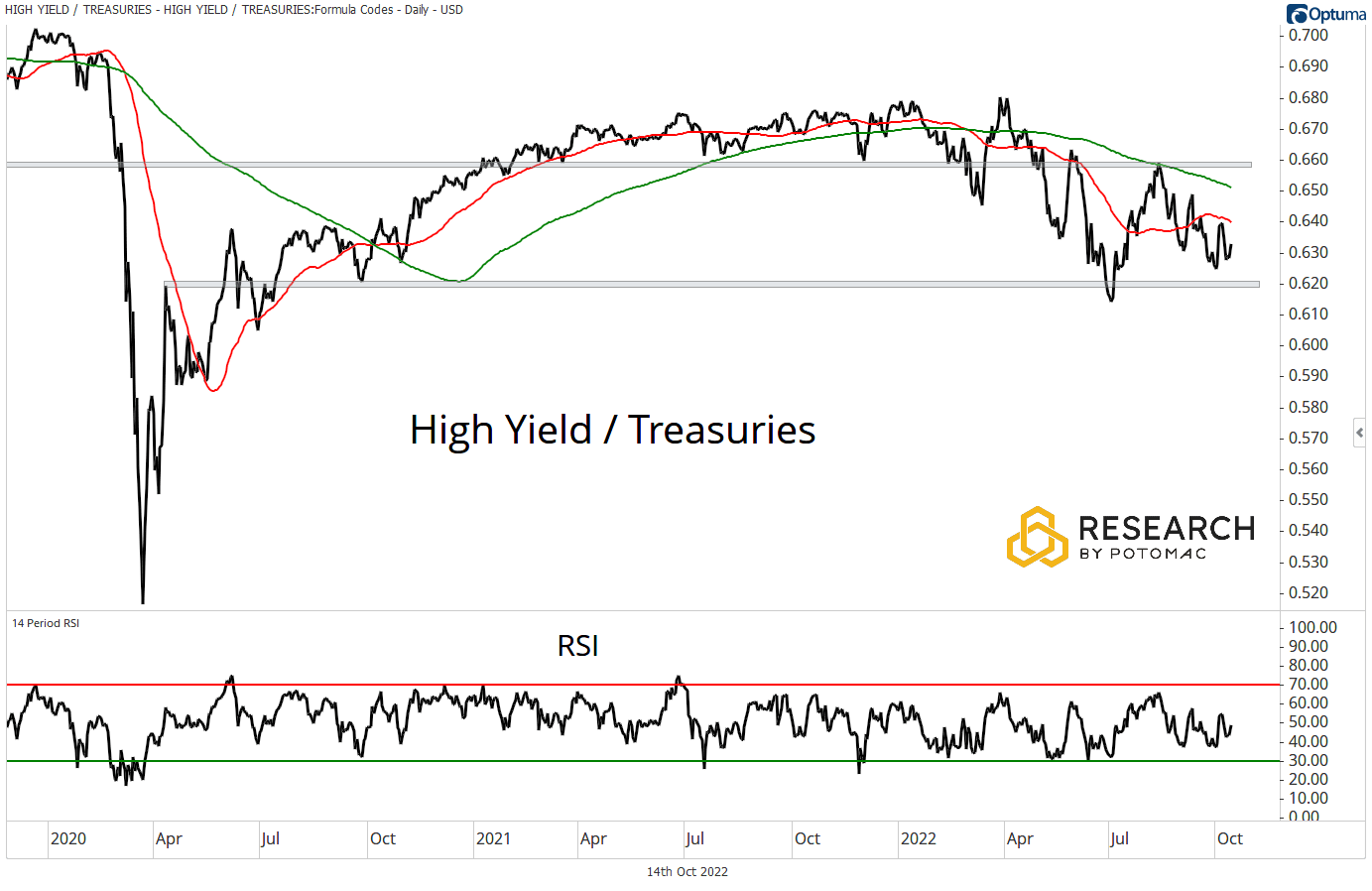
Lumber vs Gold
The Lumber/Gold ratio is trying to stabilize as it retakes the 50-day moving average below the declining 200-day moving average. If the ratio is going to rally, signaling increasing risk appetite in the market, this would be a good place to begin that advance.
The 14-day RSI has moved into a neutral position.
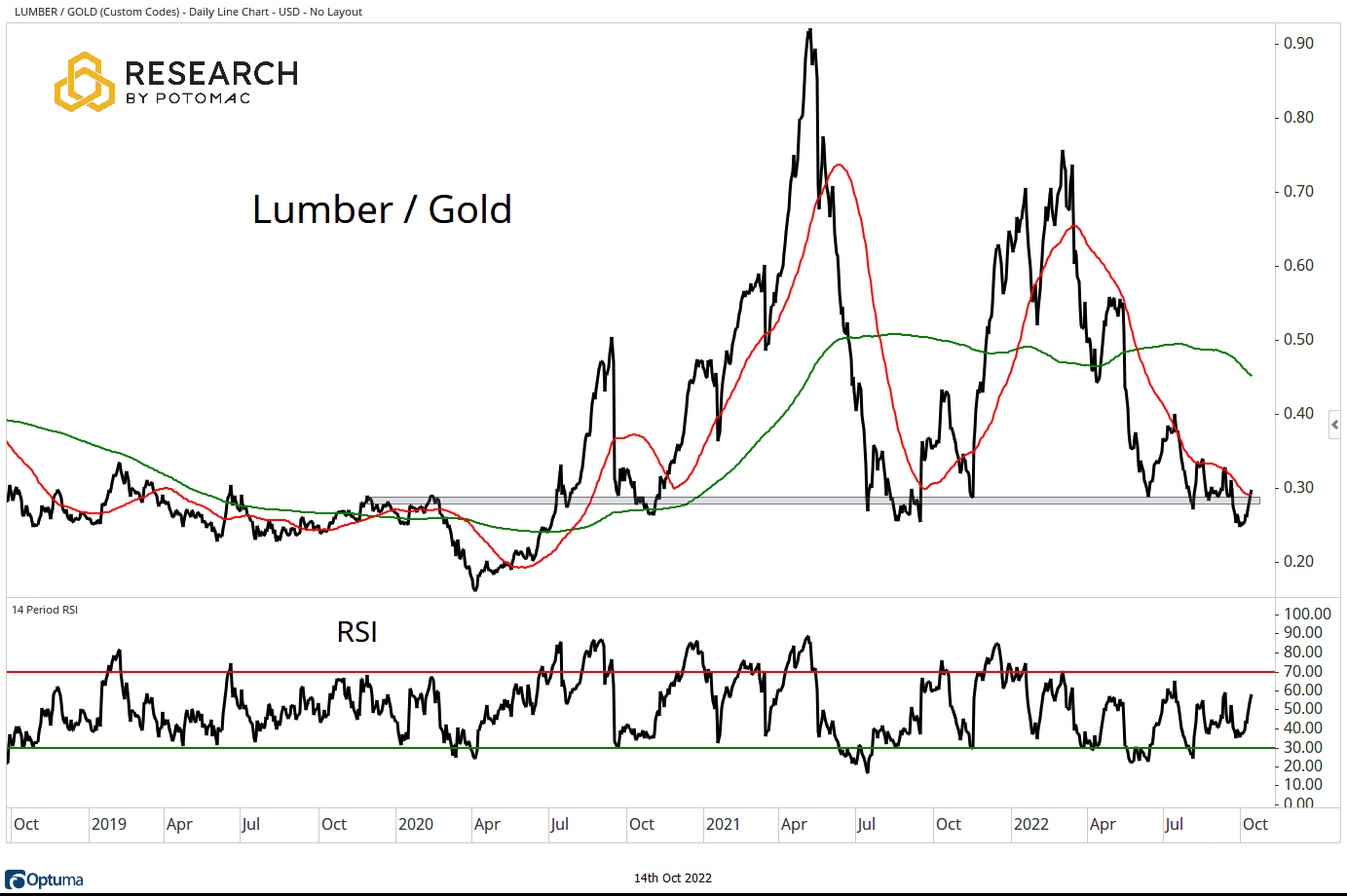
Copper vs Gold
The Copper/Gold ratio continues to trade in a neutral position between support and resistance but below the moving averages. The trend is confirmed by the RSI sitting in the middle of the range. However, there is a downside bias with the RSI still trading in a bearish regime.
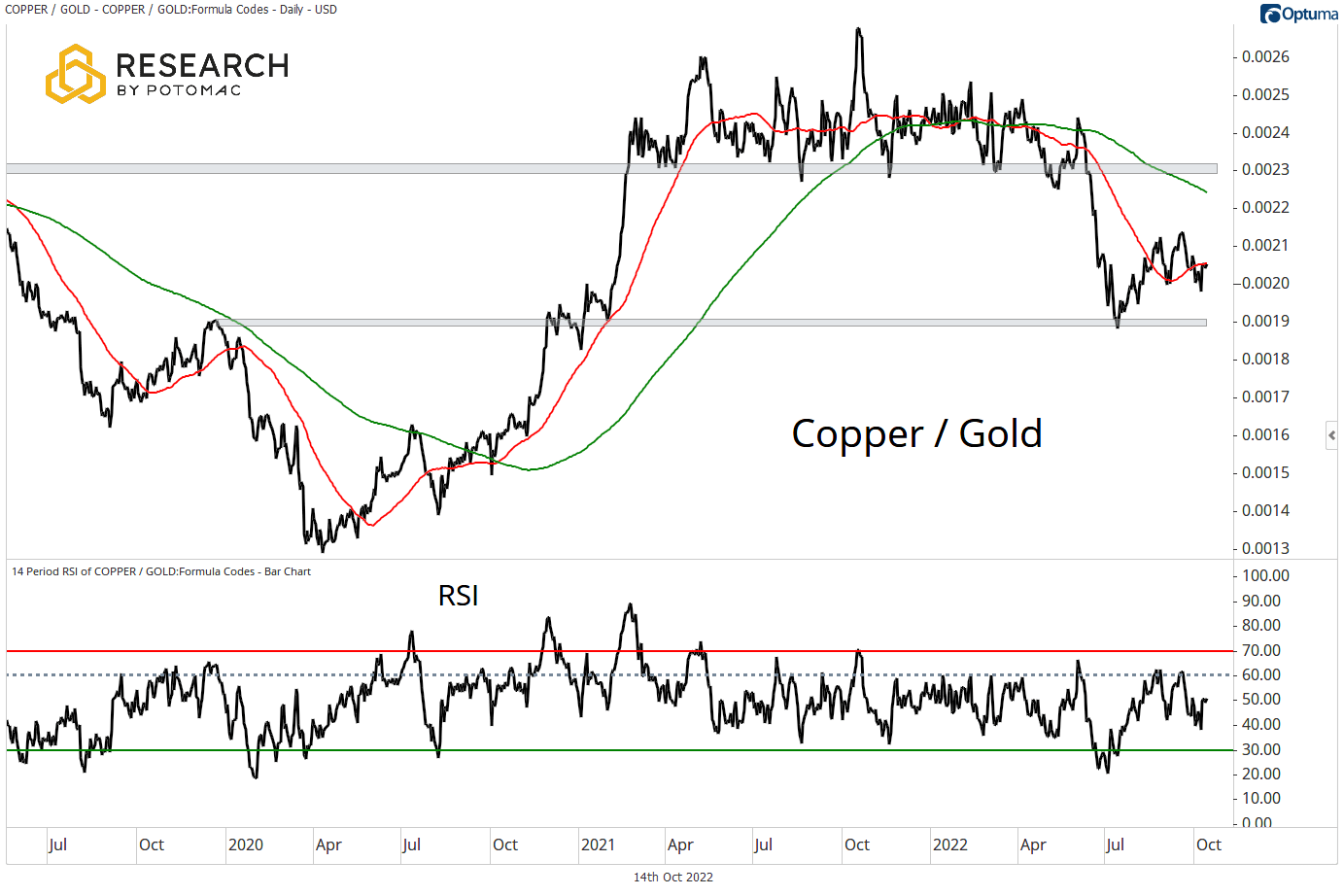
Potomac Fund Management ("Company") is an SEC-registered investment adviser. SEC registration does not constitute an endorsement of the advisory firm by the SEC nor does it indicate that the advisory firm has attained a particular level of skill or ability. This information is prepared for general information only and should not be considered as individual investment advice nor as a solicitation to buy or offer to sell any securities. This material does not constitute any representation as to the suitability or appropriateness of any investment advisory program or security. Please visit our FULL DISCLOSURE page. The company does not make any representations or warranties as to the accuracy, timeliness, suitability, completeness, or relevance of any information prepared by any unaffiliated third party, whether linked to the Company website or incorporated herein, and takes no responsibility for any of this information. The views of the Company are subject to change and the Company is under no obligation to notify you of any changes. Different types of investments involve varying degrees of risk, and there can be no assurance that the future performance of any specific investment or investment strategy will be profitable or equal to any historical performance level.
